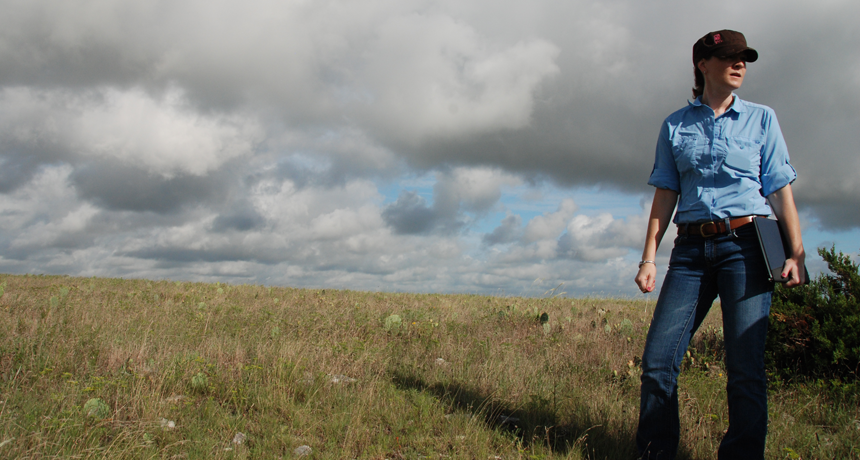Questions for ‘A woman’s place is in science’

Brooke Best is a botanist (plant scientist) at the Botanical Research Institute of Texas. There she studies plant biodiversity and helps manage an academic journal and book series. In this image, she is scoping out prairies to use as a template for a novel “green roof” design. “I really enjoy memorizing rap songs (or any songs) with lots of very fast lyrics,” she says. “Must be the word lover in me!”
David Fisk